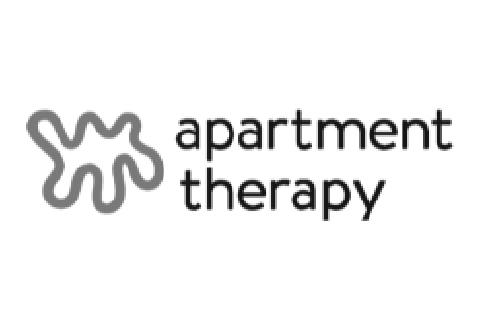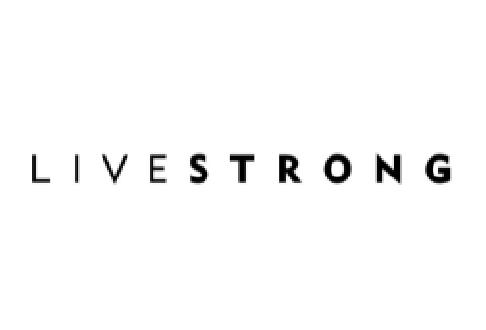We think. Therefore, we are conscious beings. But we are more than that—we are also self-aware. What is the difference? And why is it important for a life coach to help the client deepen their awareness?
CONSCIOUSNESS vs AWARENESS
First, I have an Awareness of my body (sentience) and of the surrounding environment. But then, I also have Self-awareness, which is the recognition of that Awareness. It is not only the understanding that I exist, but also the understanding that I am aware of my own existence. In other words, Awareness has an object.
While to be conscious broadly means “to think”; to be self-aware is to realize that I am thinking, that I am feeling something, that I am my body, and that I function in a certain way. The entire experience is subjective, continuous, and intentional (that is, directed at an object).
Phenomenologists are concerned about how the world appears to us, and how it is accessible to us. They describe the structures of consciousness through which the world “is” for us. These structures include intentionality, temporality, attention, embodiment, inter-subjectivity, and self-awareness. In their work with clients, Coaches, to various degrees, may need to delve into several of these structures. But none is more important than (self-) Awareness.
Phenomenologists typically focus on pre-reflective consciousness. Coaches’ focus is precisely the opposite – bringing the objects of consciousness to the fore and helping the client become aware of the experience. Most of the time, this “object” of interest is the Self (understood here as a psyche in its wholeness).
This is the difference. Pre-reflective self-consciousness just “is”. No dedicated effort to inspect it is needed. This consciousness is simply present. It is there whenever I reflect on my own experiences. when I let my imagination run into the future, when I experience emotions, hunger, or pain. Awareness, on the other hand, will surface when I intentionally introspect any of those experiences.
When an infant is born, it will quickly learn to perceive its environment and it will respond to people and things around it. But it won’t be instantly self-aware. That sense of Self will emerge later, when children learn to recognize themselves in the mirror and when they later begin to distinguish their own point of view from other people’s perspectives.
Some of the reflective stages of awareness appear largely effortless. When I look at myself in the mirror, I become ‘aware’ of my own image. When I use language and express myself with a pronoun in the first person singular, I delineate my Self from the environment. When I listen to the recording of my own voice and become surprised by its sound. In all these cases, I bring the “I” into focus.
But reflective Self-awareness needs to go further than that. A significant proportion of mankind never attempts to enter these deeper levels of self-reflection.
Generating New Perspectives
Coaches are trained to guide clients to first have a more clear perspective of where they are, then to create and integrate new perspectives that invite growth.
Often, when clients meet their coach, they are beset by a range of self-defeating beliefs. By deepening their awareness, clients can build a richer and more holistic vision of themselves.
To assist the client in this effort, the coach needs to develop the ability to elicit multiple sources of information (physical, emotional, cognitive, etc), and to guide the client to new insights that promote growth.
This work will require a focus on Self-awareness.

SELF-AWARENESS
To experience any kind of change, it is vital to becoming aware of various internal processes through the discovery, deepening, and reconnecting of Awareness at each Aspect of Being. This includes:
- Body Awareness
- Emotional Awareness
- Metacognition (awareness of our own thinking process)
- Spiritual Awareness
- Self-awareness in Doing (conscious action)
As mentioned, Awareness is directed at a specific object. With some training, it can be selectively directed at various stimuli, including various aspects of the Self.
Each Aspect of Being (physical, emotional, cognitive, spiritual) has a corresponding type of Awareness that can be gradually deepened through specific practices.
It is possible to define three levels of awareness. These levels are simple detection, acknowledgment, and full embrace.
Although, in theory, we should all be capable to proceed to those ever deeper zones of Awareness; in practice, guidance by a professional, such as a coach is necessary. The inherent self-reflectivity of the experience may appear confusing to someone who has little experience, especially at the beginning. The inter-subjective quality introduced in a coaching relationship will facilitate and ease the process.
The coach helps clients expand their awareness of what they experience in the present moment. It is not the coach’s role to draw conclusions on what the client’s ‘awareness’ should be. The process of discovery operates uniquely in the first person. In this process, it is perfectly OK if there are ‘blanks’, ‘voids’, or spells of silence. If they appear as empty sheets, it only points to the potential they carry forward.

-
DETECTION
The most basic Awareness is accessed at the level of simple observation. This is where emotions, thoughts, and actions are each accessed through detection. The realization is: “It’s there” – such and such state, emotion, sensation, or a thought.
At the physical level, this simply means the realization of our senses, leading to the fullest awareness of the way in which our body detects signals from the outside (light, sounds, temperature, aromas, movement of the air, contact with physical objects or liquids) or from the inside (pressure, heat, aches, tickles, pain, etc).
At the emotional level, the physical corollary of primary emotions (anger, fear, sadness, disgust) can be identified in specific parts of our body. An entire atlas of emotions – corresponding to sensations in various parts of the body – has been generated to facilitate this process of discovery.
At the cognitive level, the awareness of our thoughts is achieved through meta-cognition. We become aware of the flow of spontaneous thoughts – whether images, verbal or unstructured scraps of cognitive material. It is akin to developing a second “brain”, whose only role consists in observing what the actual “thinking” cerebrum does.
At the spiritual level, we start by developing a spiritual practice that increases our capacities to perceive more subtle information.
Having done the detection work at all the four Aspects of Being, it is time to move to the level of Doing and proceed to action planning.
-
ACKNOWLEDGEMENT
The second level of awareness involves acknowledgment of the detected object(s). It can be easily captured by resorting to the fourth dimension of our experience, i.e. temporality. It simply means ‘staying with it’ for a little longer than a flash of the emotions, a flicker of thoughts, a passing sensation would habitually invite us to.
By welcoming these elusive phenomena, we become more acquainted with them, even if the underlying material may appear displeasing at first (e.g. aversive emotions, fatalistic thoughts, and painful sensations).
At the physical level, the proper approach depends on the preferred (automated) coping strategy – i.e. whether it is fight, flight, or freeze. The acknowledgment here would consist in performing, for example, breathing exercises, grounding, or, conversely, shaking the body.
At the emotional level, acknowledgment means, again, ‘staying’ with the emotion for a little longer. The emotional content brings a lot of information about the way we interact with the outside world and with ourselves. We all too easily dismiss this informational content, out of fear of discomfort.
At the cognitive level, now that we have detected the thinking pattern that we automatically employ, we endeavor to probe the factual basis for our thoughts. This quest for underlying facts often leads to self-inquiry and it is extremely difficult to conduct it without the help of a professional, such as a life coach, who has mastered the art of asking proper questions.
At the spiritual level, it is advised to adopt an approach of humility. It is very difficult to successfully conduct the acknowledgment process if we delude ourselves with an overblown self-image. Humility – in the way we interact with others and with our very selves – is a basic virtue that helps us stay with this information.
At the level of Doing, this is the time to stay the course and continue on the path determined at the detection zone. It’s a commitment to stay on track.
-
EMBRACE
Finally, the third level of awareness leads to the full embrace of whatever arises.
At the physical level, this is facilitated by many forms of meditation.
At the emotional level, embracing involves employing a more comprehensive vocabulary to label the experience by pinpointing its nature across a number of dimensions (intensity, movement, frequency of oscillation).
At the cognitive level, we proceed to reframe the original thought. Here again, guidance from the coach will be of great help. The process involves a number of steps, including refutation, confirmation, and selection of alternatives.
At the spiritual level, it requires the realization of the power of the present moment, where deep awareness allows all the Aspects of Being to come together.
At the level of Doing, it is now possible to develop productive habits. Through increasingly automated actions, a new behavior begins to feel like second nature.
BETAS PROCESS

At New York Life Coaching Institute, we teach aspiring coaches how to streamline the process of deepened Self-Awareness in each of the four Aspects of Being.
The BETAS Process (Body-Emotions-Thoughts-Action-Spirituality) provides detailed guidance on how to help the client deepen the level of Awareness across all the four Aspects of Being – Physical, Emotional, Cognitive, and Spiritual, and at the Aspect of Doing. Clients will apprehend their wholeness by experiencing how the different Aspects of Being are interconnected and how these connections can be leveraged to constructively and sustainably transform behavior.
Interested to become a Life Coach? Learn more about our Certification Program.




























